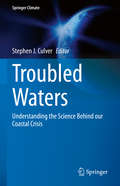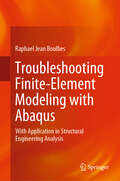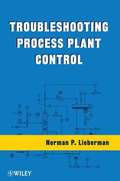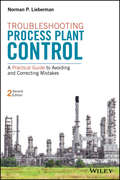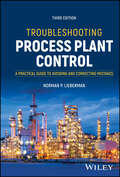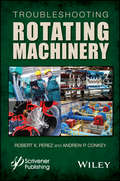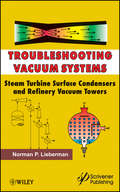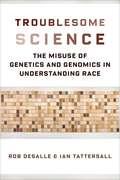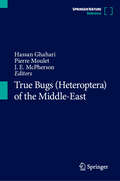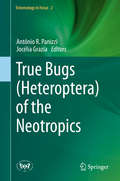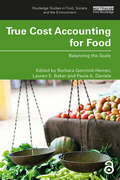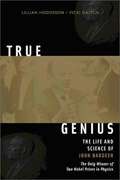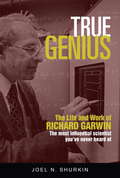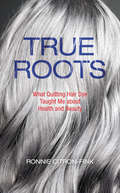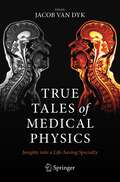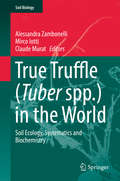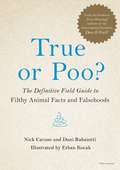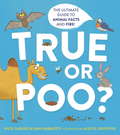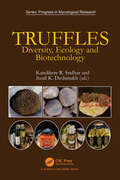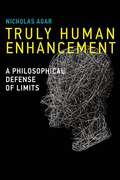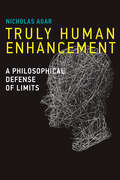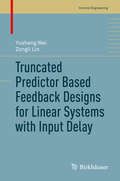- Table View
- List View
Troubled Waters: Understanding the Science Behind our Coastal Crisis (Springer Climate)
by Stephen J. CulverThe book communicates coastal geology such that the reader gets a better understanding of how scientists work and how scientific knowledge is acquired and how it progresses. It presents the human side of geologic research, including missteps, in this case, research on coastal change of the recent past, the present, and the near future. The audience for this volume is the general public, coastal managers, politicians, and decision makers in general, in the coastal realm. But the implications of this work with regard to future climate change and human responses are relevant globally.
Troubleshooting Electric Motors (Fourth Edition)
by Thomas E. Proctor Glenn A. MazurTroubleshooting Electric Motors is a text/workbook that includes information and procedures for troubleshooting motors and motor circuits commonly used in industrial applications. It includes all aspects of troubleshooting, from locating the problem using test instruments to selecting the correct motor for replacement. Each chapter concludes with activities and trade tests to help reinforce troubleshooting concepts. This edition includes an introduction to test instruments, AC and DC generators, and servo-motors. Information on energy-efficient motors and safety has been expanded.
Troubleshooting Finite-Element Modeling with Abaqus: With Application in Structural Engineering Analysis
by Raphael Jean BoulbesThis book gives Abaqus users who make use of finite-element models in academic or practitioner-based research the in-depth program knowledge that allows them to debug a structural analysis model. The book provides many methods and guidelines for different analysis types and modes, that will help readers to solve problems that can arise with Abaqus if a structural model fails to converge to a solution. The use of Abaqus affords a general checklist approach to debugging analysis models, which can also be applied to structural analysis.The author uses step-by-step methods and detailed explanations of special features in order to identify the solutions to a variety of problems with finite-element models. The book promotes: • a diagnostic mode of thinking concerning error messages; • better material definition and the writing of user material subroutines; • work with the Abaqus mesher and best practice in doing so; • the writing of user element subroutines and contact features with convergence issues; and• consideration of hardware and software issues and a Windows HPC cluster solution.The methods and information provided facilitate job diagnostics and help to obtain converged solutions for finite-element models regarding structural component assemblies in static or dynamic analysis. The troubleshooting advice ensures that these solutions are both high-quality and cost-effective according to practical experience. The book offers an in-depth guide for students learning about Abaqus, as each problem and solution are complemented by examples and straightforward explanations. It is also useful for academics and structural engineers wishing to debug Abaqus models on the basis of error and warning messages that arise during finite-element modelling processing.
Troubleshooting Process Plant Control
by Norman P. LiebermanThe book focuses on process control in the petroleum and refinery industries, with an emphasis on problem solving. The author explores various real life examples and relays the lessons learned from his career in this area. He explains many new yet straightforward concepts without the use of complex mathematics. This handy go-to emphasizes single and well-established process engineering principles that will help working engineers and operators switch manual control loops to automatic control.
Troubleshooting Process Plant Control: A Practical Guide to Avoiding and Correcting Mistakes
by Norman P. LiebermanExamines real life problems and solutions for operators and engineers running process controls Expands on the first book with the addition of five new chapters as well as new troubleshooting examples Written for the working operator and engineer, with straightforward instruction not hinged on complex math Includes real-life examples of control problems that commonly arise and how to fix them Emphasizes single and well-established process engineering principles that will help working engineers and operators switch manual control loops to automatic control
Troubleshooting Process Plant Control: A Practical Guide to Avoiding and Correcting Mistakes
by Norman P. LiebermanA practical and engaging guide to running process controls in petrochemical plants and refineries Process control is an area of study dealing with controlling variables that emerge in process plants, such as chemical plants, wastewater purification plants, or refineries. Existing guides to process control are numerous, but they tend to be associated with control engineering, which is more mathematical and theoretical. There is an urgent need for a more straightforward and concrete guide for practical use in petrochemical plants and refineries. Troubleshooting Process Plant Control meets this need with a work dedicated to real-life solutions and problem solving. Rooted in real-world examples and the career experience of the author, it largely avoids complex mathematics in favor of practical, well-established process engineering principles. Now fully updated to reflect the latest best practices and developments in the field, it is indispensable for process controllers in active plants of all kinds. Readers of the third edition will also find: New chapters on alarm disabling, spectrometer use, and reducing CO2 emissionsAdditional novel examples throughoutGuidelines for using spectrometers to directly control reflux rates and steam flow to reboilers Troubleshooting Process Plant Control is ideal for practicing engineers and other technical professionals working in process facilities, as well as advanced students taking professional training courses in these fields.
Troubleshooting Rotating Machinery: Including Centrifugal Pumps and Compressors, Reciprocating Pumps and Compressors, Fans, Steam Turbines, Electric Motors, and More
by Robert X. Perez Andrew P. ConkeyProcess machines are critical to the profitability of processes. Safe, efficient and reliable machines are required to maintain dependable manufacturing processes that can create saleable, on-spec product on time, and at the desired production rate. As the wards of process machinery, we wish to keep our equipment in serviceable condition. One of the most challenging aspects of a machinery professional or operator's job is deciding whether an operating machine should be shut down due to a perceived problem or be allowed to keep operating. If he or she wrongly recommends a repair be conducted, the remaining useful machine life is wasted, but if he or she is right, they can save the organization from severe consequences, such as product releases, fires, costly secondary machine damage, etc. This economic balancing act is at the heart of all machinery assessments. Troubleshooting is part science and part art. Simple troubleshooting tables or decision trees are rarely effective in solving complex, real-world machine problems. For this reason, the authors want to offer a novel way to attack machinery issues that can adversely affect the reliability and efficiency of your plant processes. The methodology presented in this book is not a rigid "cook book" approach but rather a flexible and dynamic process aimed at exploring process plant machines holistically, in order uncover the true nature the problem at hand.
Troubleshooting Vacuum Systems
by Norman P. LiebermanVacuum systems are in wide spread use in the petrochemical plants, petroleum refineries and power generation plants. <P><P>The existing texts on this subject are theoretical in nature and only deal with how the equipment functions when in good mechanical conditions, from the viewpoint of the equipment vendor. In this much-anticipated volume, one of the most well-respected and prolific process engineers in the world takes on troubleshooting vacuum systems, and especially steam ejectors, an extremely complex and difficult subject that greatly effects the profitability of the majority of the world's refineries.
Troubleshooting and Problem-Solving in the IVF Laboratory
by Kay Elder Elder, Kay and Van den Bergh, Marc and Woodward, Bryan Van den Bergh, Marc Bryan WoodwardMaintaining consistent and reliably high success rates is a daily challenge for every IVF laboratory. This step-by-step guide is an essential aid in navigating the complex maze of physical, chemical, biological, and logistic parameters that underpin successful gamete and embryo culture: temperature, pH, osmolality, gas supplies, air quality, light exposure, infections, managing supplies, personnel, as well as overall quality control. Numerous real-life troubleshooting case reports are presented, identifying all aspects necessary for troubleshooting. Process maps and flow charts accompanying each chapter offer a logical and systematic approach to problem solving in the laboratory. This is an essential resource for scientists in assisted reproductive technology and specialists in reproductive biology and medicine, helping IVF clinics to achieve the dream of every infertile couple: the birth of a healthy child.
Troublesome Science: The Misuse of Genetics and Genomics in Understanding Race (Race, Inequality, and Health #2)
by Ian Tattersall Rob DeSalleIt is well established that all humans today, wherever they live, belong to one single species. Yet even many people who claim to abhor racism take for granted that human “races” have a biological reality. In Troublesome Science, Rob DeSalle and Ian Tattersall provide a lucid and forceful critique of how scientific tools have been misused to uphold misguided racial categorizations.DeSalle and Tattersall argue that taxonomy, the scientific classification of organisms, provides an antidote to the myth of race’s biological basis. They explain how taxonomists do their science—how to identify a species and to understand the relationships among different species and the variants within them. DeSalle and Tattersall also detail the use of genetic data to trace human origins and look at how scientists have attempted to recognize discrete populations within Homo sapiens. Troublesome Science demonstrates conclusively that modern genetic tools, when applied correctly to the study of human variety, fail to find genuine differences. While the diversity that exists within our species is a real phenomenon, it nevertheless defeats any systematic attempt to recognize discrete units within it. The stark lines that humans insist on drawing between their own groups and others are nothing but a mixture of imagination and ideology. Troublesome Science is an important call for researchers, journalists, and citizens to cast aside the belief that race has a biological meaning, for the sake of social justice and sound science alike.
True Bugs (Heteroptera) of the Middle-East
by J. E. McPherson Hassan Ghahari Pierre MouletThis reference guide covers information on the true bugs (Heteroptera) of Middle East and includes taxonomy, general biology, economic importance, applied aspects, and distributional data. It also includes up-to-date reviews of the literature on the Heteroptera of the Middle East. The book represents a clear guide for future research in heteropteran biology. Apart from providing a taxonomic treatment of all the families known from the Middle East, information is provided on Iranian and general geographic distributions, bionomics, ecology, natural enemies, prey records, and plant associations for the various species. General discussion also is included on morphology, economic importance, family characters of each group, and affinity with related groups. This book includes detailed information on more than 2,000 species of the Middle East Heteroptera belonging to 58 families. An exhaustive bibliography (over 4,000) has been provided to facilitate studies of chosen aspects of the various species. Up-to-date information for the various species has been provided as far as possible. The book contains the contributions of 37 heteropteran specialists from 17 countries. This book is of interest to teachers, researchers, and masters and Ph. D students of entomology, biosciences, agriculture, biological control, IPM (Integrated Pest Management), and environmental sciences. Also, the book serves as additional reading material for undergraduate and graduate students of the mentioned scientific fields. National and international entomological and agricultural scientists may also find the book to be a useful read as well as those individuals who are active in medical, urban, and forensic entomology because there are several heteropteran pests in these fields.
True Bugs (Heteroptera) of the Neotropics
by Antônio R. Panizzi Jocélia GraziaTrue bugs (Heteroptera) are a diverse and complex group of plant-feeding and predatory insects important to food production, human health, the global economy and the environment. Within the nearly 43,000 species described around the world, Neotropical true bugs are particularly diverse, and much remains to be discovered about their biology and relations with other species. Inspired by the need for a comprehensive assessment, True Bugs (Heteroptera) of the Neotropics is the most complete and thorough review ever published. Experts in each of the seven infraorders have drawn together the scattered literature to provide detailed treatments of each major taxon. The most common and important species as well as select lesser known species in each major family are covered, highlighting morphology, classification, biology and ecology. The numerous color illustrations highlight key species and their adaptations, and importance to basic and applied sciences is discussed. Each chapter is based on an up-to-date review of the literature, and with a bibliography of more than 3,000 references, readers are presented with an unprecedented and vital and timely account of the true bugs of the Neotropical Region.
True Cost Accounting for Food: Balancing the Scale (Routledge Studies in Food, Society and the Environment)
by Barbara Gemmill-HerrenThis book explains how True Cost Accounting is an effective tool we can use to address the pervasive imbalance in our food system. Calls are coming from all quarters that the food system is broken and needs a radical transformation. A system that feeds many yet continues to create both extreme hunger and diet-related diseases, and one which has significant environmental impacts, is not serving the world adequately. This volume argues that True Cost Accounting in our food system can create a framework for a systemic shift. What sounds on the surface like a practice relegated to accountants is ultimately a call for a new lens on the valuation of food and a new relationship with the food we eat, starting with the reform of a system out of balance. From the true cost of corn, rice and water, to incentives for soil health, the chapters economically compare conventional and regenerative, more equitable farming practices in and food system structures, including taking an unflinching look at the true cost of cheap labour. Overall, this volume points towards the potential for our food system to be more human-centred than profit-centred and one that has a more respectful relationship to the planet. It sets forth a path forward based on True Cost Accounting for food. This path seeks to fix our current food metrics, in policy and in practice, by applying a holistic lens that evaluates the actual costs and benefits of different food systems, and the impacts and dependencies between natural systems, human systems, agriculture and food systems. This volume is essential reading for professionals and policymakers involved in developing and reforming the food system, as well as students and scholars working on food policy, food systems and sustainability.
True Enough
by Catherine Z. ElginThe development of an epistemology that explains how science and art embody and convey understanding. Philosophy valorizes truth, holding that there can never be epistemically good reasons to accept a known falsehood, or to accept modes of justification that are not truth conducive. How can this stance account for the epistemic standing of science, which unabashedly relies on models, idealizations, and thought experiments that are known not to be true? In True Enough, Catherine Elgin argues that we should not assume that the inaccuracy of models and idealizations constitutes an inadequacy. To the contrary, their divergence from truth or representational accuracy fosters their epistemic functioning. When effective, models and idealizations are, Elgin contends, felicitous falsehoods that exemplify features of the phenomena they bear on. Because works of art deploy the same sorts of felicitous falsehoods, she argues, they also advance understanding. Elgin develops a holistic epistemology that focuses on the understanding of broad ranges of phenomena rather than knowledge of individual facts. Epistemic acceptability, she maintains, is a matter not of truth-conduciveness, but of what would be reflectively endorsed by the members of an idealized epistemic community—a quasi-Kantian realm of epistemic ends.
True Genius: The Life And Science Of John Bardeen
by Lillian Hoddeson Vicki DaitchWhat is genius? Define it. Now think of scientists who embody the concept of genius. Does the name John Bardeen spring to mind? Indeed, have you ever heard of him?Like so much in modern life, immediate name recognition often rests on a cult of personality. We know Einstein, for example, not just for his tremendous contributions to science, but also because he was a character, who loved to mug for the camera. And our continuing fascination with Richard Feynman is not exclusively based on his body of work; it is in large measure tied to his flamboyant nature and offbeat sense of humor.These men, and their outsize personalities, have come to erroneously symbolize the true nature of genius and creativity. We picture them born brilliant, instantly larger than life. But is that an accurate picture of genius? What of others who are equal in stature to these icons of science, but whom history has awarded only a nod because they did not readily engage the public? Could a person qualify as a bona fide genius if he was a regular Joe?The answer may rest in the story of John Bardeen.John Bardeen was the first person to have been awarded two Nobel Prizes in the same field. He shared one with William Shockley and Walter Brattain for the invention of the transistor. But it was the charismatic Shockley who garnered all the attention, primarily for his Hollywood ways and notorious views on race and intelligence.Bardeen’s second Nobel Prize was awarded for the development of a theory of superconductivity, a feat that had eluded the best efforts of leading theorists—including Albert Einstein, Neils Bohr, Werner Heisenberg, and Richard Feynman. Arguably, Bardeen’s work changed the world in more ways than that of any other scientific genius of his time. Yet while every school child knows of Einstein, few people have heard of John Bardeen. Why is this the case?Perhaps because Bardeen differs radically from the popular stereotype of genius. He was a modest, mumbling Midwesterner, an ordinary person who worked hard and had a knack for physics and mathematics. He liked to picnic with his family, collaborate quietly with colleagues, or play a round of golf. None of that was newsworthy, so the media, and consequently the public, ignored him.John Bardeen simply fits a new profile of genius. Through an exploration of his science as well as his life, a fresh and thoroughly engaging portrait of genius and the nature of creativity emerges. This perspective will have readers looking anew at what it truly means to be a genius.
True Genius: The Life and Work of Richard Garwin, the Most Influential Scientist You've Never Heard of
by Joel ShurkinRichard Garwin was awarded the Presidential Medal of Freedom by President Barack Obama Called a "true genius" by Enrico Fermi, Richard Garwin has influenced modern life in far-reaching ways, yet he is hardly known outside the physics community. This is the first biography of one of America's great minds--a top physicist, a brilliant technological innovator, and a trusted advisor of presidents for sixty years. Among his many contributions to modern technology are innovations we now take for granted: air-traffic control systems, touch screens, color monitors, laser printers, GPS satellite navigation, and many other facets of everyday contemporary life.But certainly his most important work has been on behalf of nuclear disarmament. As a key member of the Los Alamos team that developed the hydrogen bomb (he created the final design), Garwin subsequently devoted much of his career to ensuring that nuclear weapons never again be used. He has spent hundreds of hours testifying before Congress, serving on government advisory committees, and doing work that is still classified, all the while working for IBM as a researcher. A genuine polymath, his ideas extend from propulsion systems for interplanetary flight to preventing flu epidemics. Never shy about offering his opinions, even to rigid government bureaucracies unwilling to change, Garwin continues to show leaders how to do the smart thing. The world is a more interesting and safer place because of his many accomplishments.
True Roots: What Quitting Hair Dye Taught Me about Health and Beauty
by Ronnie Citron-FinkLike 75% of American women, Ronnie Citron-Fink dyed her hair, visiting the salon every few weeks to hide gray roots in her signature dark brown mane. She wanted to look attractive, professional, young. Yet as a journalist covering health and the environment, she knew something wasn't right. All those unpronounceable chemical names on the back of the hair dye box were far from natural. Were her recurring headaches and allergies telltale signs that the dye offered the illusion of health, all the while undermining it?So after twenty-five years of coloring, Ronnie took a leap and decided to ditch the dye. Suddenly everyone, from friends and family to rank strangers, seemed to have questions about her hair. How'd you do it? Are you doing that on purpose? Are you OK? Armed with a mantra that explained her reasons for going gray—the upkeep, the cost, the chemicals—Ronnie started to ask her own questions.What are the risks of coloring? Why are hair dye companies allowed to use chemicals that may be harmful? Are there safer alternatives? Maybe most importantly, why do women feel compelled to color? Will I still feel like me when I have gray hair?True Roots follows Ronnie's journey from dark dyes to a silver crown of glory, from fear of aging to embracing natural beauty. Along the way, readers will learn how to protect themselves, whether by transitioning to their natural color or switching to safer products. Like Ronnie, women of all ages can discover their own hair story, one built on individuality, health, and truth.
True Tales of Medical Physics: Insights into a Life-Saving Specialty
by Jacob Van DykSince the discovery of the x-ray over 125 years ago, scientists and medical professionals alike have harnessed the power of the atom to heal and protect. This book brings together an all-star cast of high-profile and award-winning scholars, introducing the general readership to an often unnoticed yet societally vital profession – medical physics. This collection of personal short stories offers an informal, behind-the-scenes glimpse into the lives of these esteemed professionals, encapsulating their transformative “aha” moments within a whimsical hodgepodge of instructive and inspiring anecdotes. They even pass on words of wisdom discovered from their diverse experiences throughout the academic, clinical, and commercial worlds. The wealth of information packed into these vignettes runs the gamut from practical career advice to lighthearted tales of humorous misadventure, providing a tremendous overview of the breadth and depth of medical physics as a career and discipline while imparting sage advice that extends well beyond the field. In his Foreword to this book Rafael Grossi, Director General of the International Atomic Energy Agency, provides his strong endorsement of the life-saving work carried out by medical physicists and the profession as a whole.From the general public to the budding student in search of career guidance, as well as young and seasoned practicing professionals, these thought-provoking, witty, and simply entertaining “untold stories” encourage the reader to reflect on and ponder the many enduring lessons born from unexpected life-turning events.
True Truffle (Tuber spp.) in the World
by Alessandra Zambonelli Mirco Iotti Claude MuratThis book focuses on the taxonomic diversity of the genus Tuber as economically important truffles. In contributions by internationally respected scientists, it examines truffle systematics, interactions with abiotic and biotic environments, strategies for spore dispersal, and molecular processes in truffles. Topics discussed include: evolutionary theories and phylogeny of Tuber species from Asia, Europe and North-America; the influence of climate on the natural distribution of Tuber species and fruiting body production, soil characteristics and vegetation in natural habitats; tools for tracing truffles in soil, host diversity, truffle inhabiting fungi and truffle-associated bacteria; and the relationships of small mammals and wild boars with truffles, as well as the smell of truffles. This book offers a valuable reference guide for all researchers working in the fields of mycology, ecology and the soil sciences, and will also be useful for farmers and foresters interested in truffle cultivation worldwide.
True or Poo?: The Definitive Field Guide to Filthy Animal Facts and Falsehoods (Does It Fart Series #2)
by Nick Caruso Dani RabaiottiFrom the scientist duo behind the New York Times bestselling sensation Does It Fart? comes a new illustrated compendium of animal facts and falsehoods, from the head-scratching to the repulsive! After Does It Fart? comes Number Two...a fully illustrated compendium of animal facts and falsehoods--the more repulsive the better. Do komodo dragons have toxic slobber? Is it true that a scorpion that sheds its tail dies of constipation? Speaking of poo, do rabbits really have a habit of, err, eating their own? And can you really get high from licking toads, or is that...fake newts?The answers to all these questions and more can be found in True or Poo?, a manual for disgusting and one-upping your friends and enemies for years to come.
True or Poo?: The Ultimate Guide to Animal Facts and Fibs (Does It Fart Ser. #2)
by Nick Caruso Dani RabaiottiThe toilet-tastic book that asks young readers to guess if animal facts are true...or POO?!Do wombats have cube-shaped poo?Do you eat spiders in your sleep?Do beetles pretend to be ant bottoms?In this hilariously helpful guide to which facts about the animal kingdom are true or false, you might be surprised to learn what's true ... and what's a big pile of poo! And you will find out a lot about that smelly stuff in this book too, from how it's made to which animals eat their own waste. (Yuck!)But will you be able to guess what's real and what's made up? Find out in this comical collection of weird habits, cool facts and sneaky myths about your favourite animals!This HILARIOUS book is the companion title to Does it Fart?
Truffles: Diversity, Ecology and Biotechnology (Progress in Mycological Research)
by Sunil K. Deshmukh Kandikere R. SridharTruffles are hypogeous ectomycorrhizal ascomycetous edible mushrooms distributed worldwide in terrestrial ecosystems, including deserts, as non-timber forest products. They are seasonal and have a short shelf life. Owing to their nutraceutical value, truffles are in high demand and valuable. Of the 180 or more species of truffles reported worldwide, only around 20 are commercially viable. Truffles: Diversity, Ecology and Biotechnology reviews the current advances in truffles from a historical perspective and covers ethnomycological profiles, habitats, ecology, geographical distribution, diversity, systematics, phylogeny, ultrastructure, sexual reproduction, cultivation, analytical techniques, and the impact of climate change and industrial applications on truffles. It also emphasizes the role of soil properties in the occurrence of truffles (e.g., Tuber spp.), their pathogens, product development and marketing. The contributors hail from academia and industries across the globe.
Truly Human Enhancement
by Nicholas AgarThe transformative potential of genetic and cybernetic technologies to enhance human capabilities is most often either rejected on moral and prudential grounds or hailed as the future salvation of humanity. In this book, Nicholas Agar offers a more nuanced view, making a case for moderate human enhancement -- improvements to attributes and abilities that do not significantly exceed what is currently possible for human beings. He argues against radical human enhancement, or improvements that greatly exceeds current human capabilities. Agar explores notions of transformative change and motives for human enhancement; distinguishes between the instrumental and intrinsic value of enhancements; argues that too much enhancement undermines human identity; considers the possibility of cognitively enhanced scientists; and argues against radical life extension. Making the case for moderate enhancement, Agar argues that many objections to enhancement are better understood as directed at the degree of enhancement rather than enhancement itself. Moderate human enhancement meets the requirement of truly human enhancement. By radically enhancing human cognitive capabilities, by contrast, we may inadvertently create beings ("post-persons") with moral status higher than that of persons. If we create beings more entitled to benefits and protections against harms than persons, Agar writes, this will be bad news for the unenhanced. Moderate human enhancement offers a more appealing vision of the future and of our relationship to technology.
Truly Human Enhancement: A Philosophical Defense of Limits (Basic Bioethics)
by Nicholas AgarA nuanced discussion of human enhancement that argues for enhancement that does not significantly exceed what is currently possible for human beings.The transformative potential of genetic and cybernetic technologies to enhance human capabilities is most often either rejected on moral and prudential grounds or hailed as the future salvation of humanity. In this book, Nicholas Agar offers a more nuanced view, making a case for moderate human enhancement—improvements to attributes and abilities that do not significantly exceed what is currently possible for human beings. He argues against radical human enhancement, or improvements that greatly exceed current human capabilities.Agar explores notions of transformative change and motives for human enhancement; distinguishes between the instrumental and intrinsic value of enhancements; argues that too much enhancement undermines human identity; considers the possibility of cognitively enhanced scientists; and argues against radical life extension. Making the case for moderate enhancement, Agar argues that many objections to enhancement are better understood as directed at the degree of enhancement rather than enhancement itself. Moderate human enhancement meets the requirement of truly human enhancement. By radically enhancing human cognitive capabilities, by contrast, we may inadvertently create beings (“post-persons”) with moral status higher than that of persons. If we create beings more entitled to benefits and protections against harms than persons, Agar writes, this will be bad news for the unenhanced. Moderate human enhancement offers a more appealing vision of the future and of our relationship to technology.
Truncated Predictor Based Feedback Designs for Linear Systems with Input Delay (Control Engineering)
by Zongli Lin Yusheng WeiThis monograph is the first of its kind to present innovative research results on truncated predictor feedback (TPF) designs for general linear systems with input delay. Beginning with a brief review of time delay systems, the first half of the book focuses on TPF with a constant feedback parameter. Both state feedback and output feedback are considered. It is established that TPF achieves stabilization in the presence of an arbitrarily large bounded delay if the open loop system is not exponentially unstable. Examples are presented to illustrate that TPF may fail to stabilize an exponentially unstable system when the delay is sufficiently large. Bounds on the delay are then established under which stabilization can be achieved. The second half of the book explores variations of the TPF laws designed with a non-constant feedback parameter to accommodate unknown delays and improve closed-loop performance. The authors employ a step-by-step approach to presenting the ultimate result on a completely delay-independent feedback law. Truncated Predictor Based Feedback Designs for Linear Systems with Input Delay will appeal to control engineers, control theorists, and graduate students studying control systems. This volume will also be a valuable resource for engineers and applied mathematicians interested in dynamic systems with time delays.
